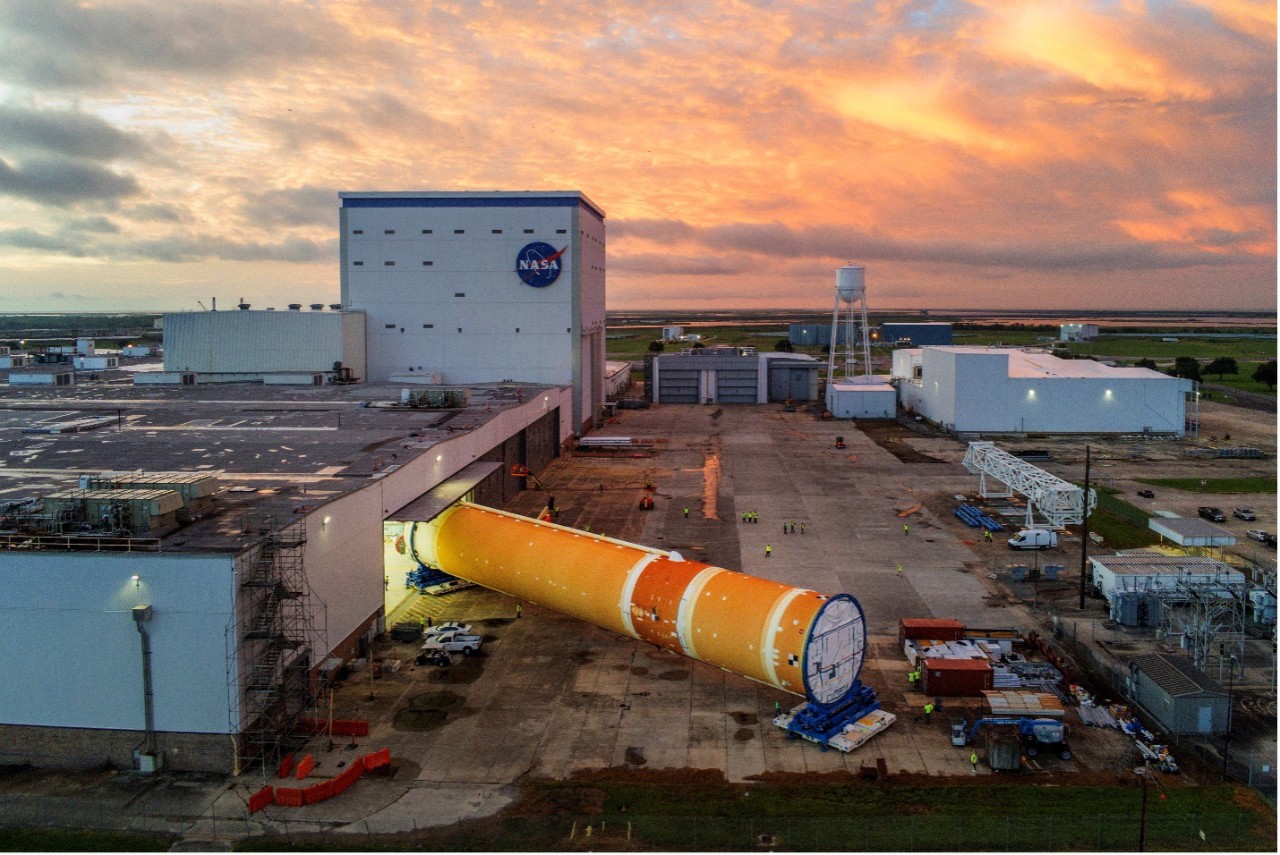2nd Artemis core stage is ready to roll
Boeing crews work final preparations ahead of moon rocket’s rollout.
 Above: Boeing crews work final preparations ahead of rollout operations. (NASA photo)
Above: Boeing crews work final preparations ahead of rollout operations. (NASA photo)
Boeing teams are meticulously checking off task lists as they prepare the fully-integrated core stage for delivery to NASA’s Kennedy Space Center (KSC).
The external access stands, or scaffolding, were cleared, allowing teammates to complete final inspections in previously inaccessible areas. Once finished, the stage was rotated and moved to its final holding place, where it will be transferred onto transportation cradles and prepared for rollout.
Why it matters: This stage will power the first crewed flight to the moon in 50 years – making history as it sends the first woman and person of color to lunar orbit.
“It’s an orchestrated effort – and the team is doing a great job finishing up all of the remaining tasks to make sure we’re ready to roll,” said Craig Williams, director, Core Stage Integrated Product Team, Space Launch System.
Soon NASA, Boeing and other industry teams will escort the 212-foot (65-meter) core stage from the Michoud Assembly Facility (MAF) in New Orleans to NASA’s Pegasus barge, where it will be shipped to KSC for integration with the remaining rocket elements.
For employees like John Neyhard, a program management specialist for SLS, it will be a day of celebration. He’s worked on the SLS program at MAF for more than a decade and says with every milestone he’s filled with a sense of pride. “Seeing the first core stage fly during the Artemis I mission made the long days, nights, challenges, failures - and successes - worth it. That sense of pride, paired with knowing there will be crew aboard this flight pushed us to do our best for Core Stage 2 as well.”
As the Boeing team finalizes preparations for the first movement, Williams says the team remains focused on the mission and the Artemis II crew. "The safety and reliability of the vehicle are non-negotiable," he emphasized. "It's an honor to be part of this historic endeavor, and we're committed to delivering a vehicle that exceeds expectations and enables the crew to reach new frontiers with confidence."
“Ensuring a top-notch vehicle for the Artemis II crew is of utmost importance to us,” added Williams. “We've dedicated years of hard work and expertise into building the propulsion, avionics subsystems and core stages for the Space Launch System (SLS) rocket, and we understand the significance of delivering a high-quality rocket for the astronauts' journey.”
NASA’s Space Launch System (SLS) rocket – the nation’s next-generation, super heavy-lift rocket – will enable NASA’s Artemis program and will carry people and cargo to the moon, Mars and beyond. Boeing was selected by NASA to design, develop, test and produce the core stages, upper stages, and avionics suite for the SLS fleet of rockets. The first SLS rocket – featuring the Boeing-built core stage – successfully launched at 1:47 AM ET on November 16, 2022, as part of the Artemis I Mission. Production is currently underway for the Boeing-built core stages, upper stages (including Exploration Upper Stage) and avionics for future Artemis missions. Learn more about the SLS.





